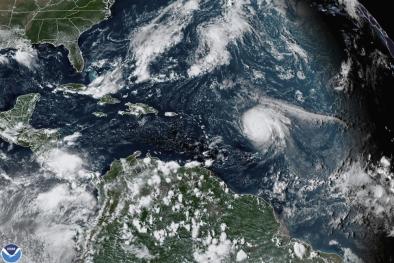After decades of decreases, mercury rises in Great Lakes wildlife

Toxic mercury is once again increasing in some Great Lakes fish and birds after decades of consistent, promising reductions.
Scientists are still trying to figure out what’s going on, but one of the suspected culprits in reversing decades of mercury reductions in wildlife is a climate change-induced increase in water temperatures.
...
Warmer water more quickly converts mercury to its more toxic form—methyl mercury. This form also more quickly accumulates in fish and birds, with each step of the food chain more contaminated than the previous.
Warmer water also does not dissolve oxygen as well as cold water, so fish have to pump more water across their gills, which can lead to more contact with toxics in the water.
Also more rainfall—total annual precipitation has increased 11 percent in the Great Lakes since 1900—means more flooding. "Flooding takes a lot of earth off the surface, this erosion of soils and sediments carries mercury and methylmercury," said Agnes Richards, a researcher at Environment and Climate Change Canada.
It’s another ecological problem borne of the complex interplay of toxics, global warming, our food and, ultimately, our health.
Related Content




